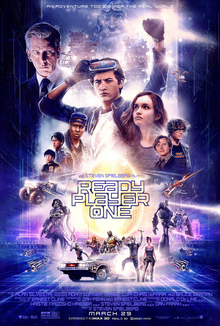
Someday we might look back on this and decide that saving Private Ryan was the one decent thing we were able to pull out of this whole godawful, shitty mess. Like you said, Captain, maybe we do that, we all earn the right to go home. Following the Normandy landings of June 1944 Captain John Miller (Tom Hanks) takes his men of the 2nd Ranger battalion behind enemy lines to find Private James Ryan (Matt Damon) a paratrooper whose three brothers have been killed in combat. Surrounded by the brutal realities of war, while searching for Ryan each man embarks upon a personal journey and discovers their own strength to triumph over an uncertain future with honor, decency and courage… Robert Rodat’s men on a mission script has the classic features of the WW2 combat movie – a selection of guys or types from all walks of life with their own business and point of view and declamatory lines. But the first thirty minutes constitute probably the best fighting scene ever put on film: a literally visceral evocation of the beach landings with things you’ll wonder any man could have survived. There are images that are seared on the brain. It’s a wholly immersive set up and utterly shocking, as real as you’ll ever want a war to be. Then the film cannily shifts in tone, content and performance from sequence to sequence ranging from the subtle to the spectacular both in terms of visuals and narrative as the story hook about the military’s single survivor policy kicks in and has its ripple effect on this battalion of soldiers reluctantly tramping across France who seem like a proper cross-section of society: Tom Sizemore, Ed Burns, Adam Goldberg, Barry Pepper, Vin Diesel. Spielberg said he wanted the kind of faces he saw in WW2 newsreels … and they work out their individual and collective issues under sniper fire and figure out what matters and try to keep going. The film has been lauded for its accuracy but some don’t like the dramatic coda. That doesn’t matter. Hanks is brilliant as the heart and soul of the outfit. When he is on the verge of hysteria at the enveloping chaos and confusion we are on the edge of our seats, with him. The horrors of war are never hidden from the audience. We get different perspectives – religious, personal, intellectual, about the rights and wrongs of bloody and vengeful action. It’s been a day of historical and war movies for me but I started out with Spielberg’s latest (Ready Player One) and I’ve concluded with this, one of the best WW2 films of them all, a stunning and perfectly judged achievement on every level because he is a director who can tell more in one frame than some directors can in entire scenes. Astonishing. MM#1700
























